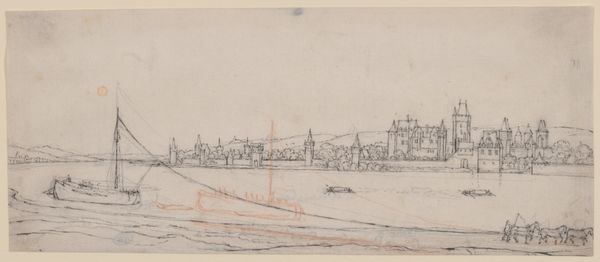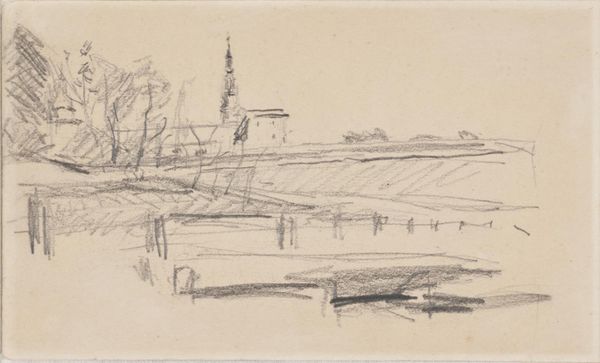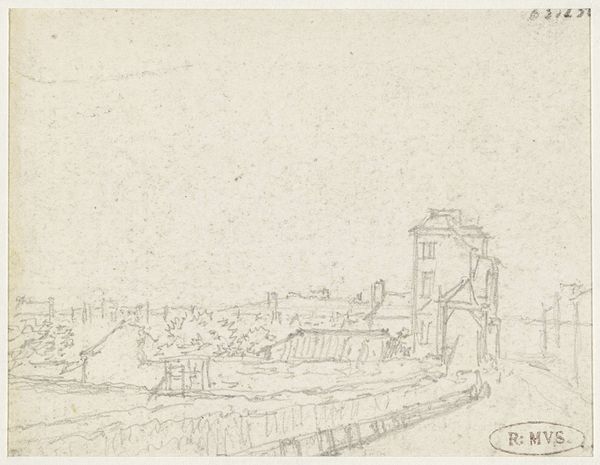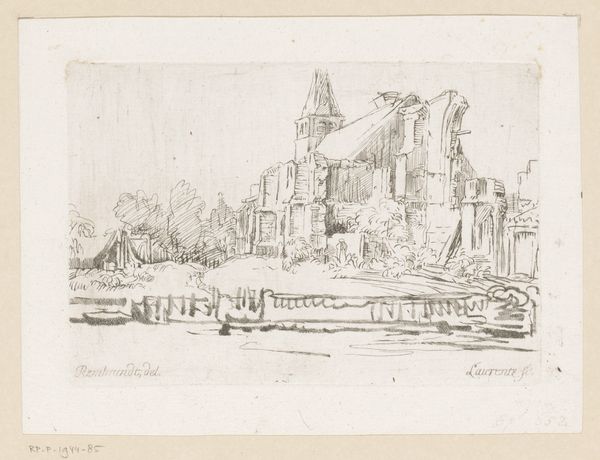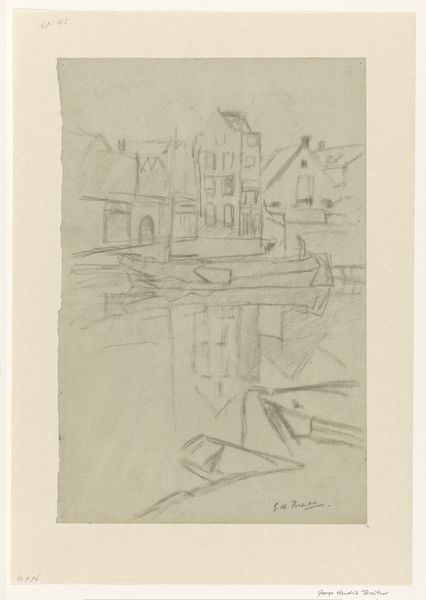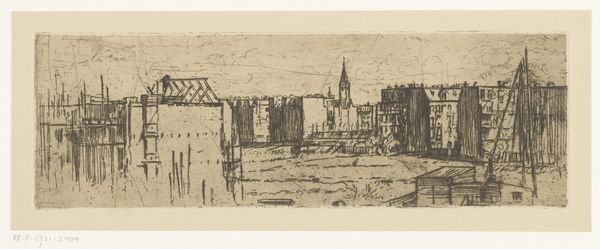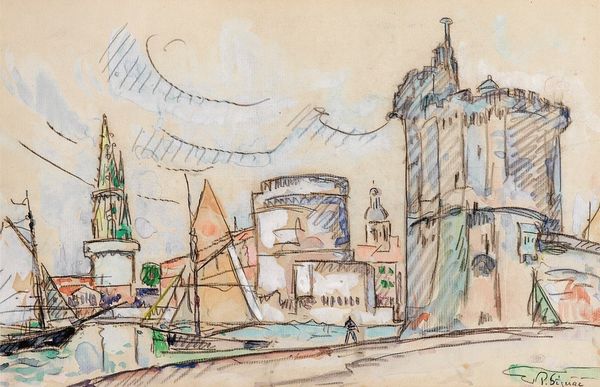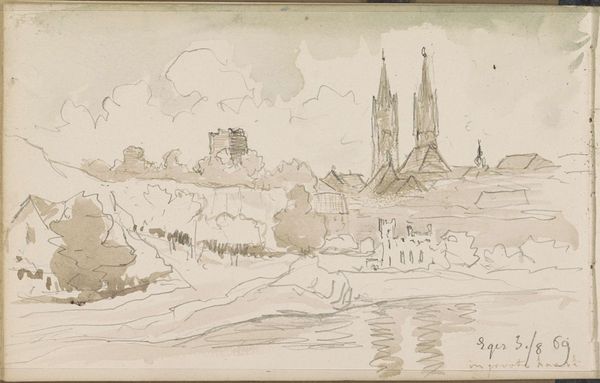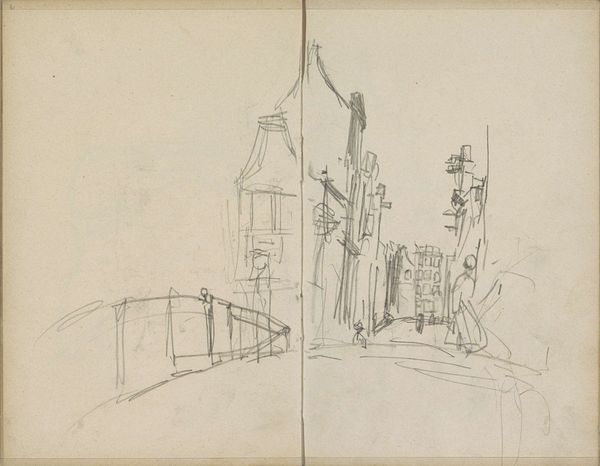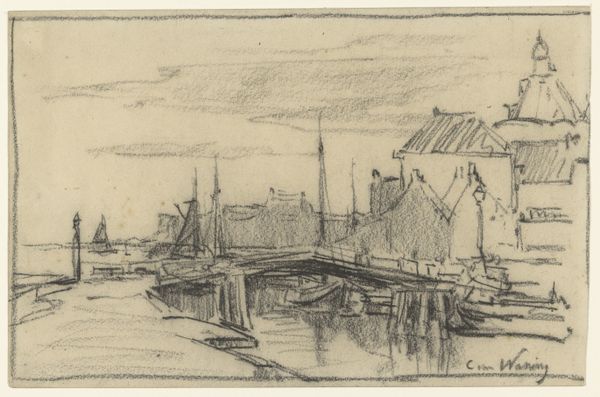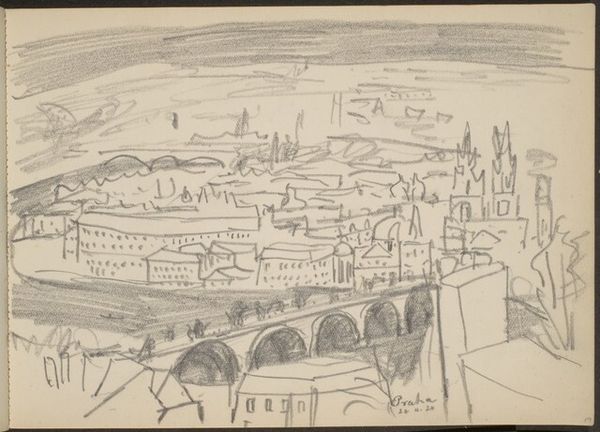
The Iron Bridge (so-called Eiserner Steg) at Frankfurt Main, View Towards Sachsenhausen c. 1916
0:00
0:00
drawing, paper, ink, graphite
#
drawing
#
ink drawing
#
landscape
#
paper
#
ink
#
expressionism
#
line
#
graphite
#
cityscape
Copyright: Public Domain
Editor: This is Ernst Ludwig Kirchner’s “The Iron Bridge (so-called Eiserner Steg) at Frankfurt Main, View Towards Sachsenhausen,” a drawing made around 1916 with ink and graphite on paper. I'm struck by how the lines capture this really specific place and moment, but they feel anxious and fleeting, not precise and permanent. What do you see in this piece? Curator: I see a network of symbols and cultural anxieties interwoven with the steel of that bridge. Bridges are connectors; yet here, the rapid, fractured lines create a sense of instability, a visual metaphor for the psychological landscape of pre-war Europe. Editor: Instability? I was focused on the speed of the drawing itself. Curator: But doesn't that speed also hint at urgency? The Expressionists like Kirchner were deeply concerned with alienation and the loss of authentic experience in the face of industrialization. Do you notice how the figures on the bridge are mere dashes, devoid of individuality? The bridge, a symbol of connection, paradoxically highlights human isolation. Editor: So, the Iron Bridge isn't just a bridge. It's like… a cage? Curator: Perhaps not a cage, but certainly a lens through which Kirchner filters his apprehension about modern life. Think of how steel itself had come to symbolize the industrial age, its promises and its dehumanizing effects. The cultural memory attached to iron—strength, progress, and yet also the coldness of machinery—infuses the image with emotional weight. Does this connection with Expressionism make more sense now? Editor: It really does. Seeing the bridge not just as a physical object but as this vessel of meaning, this loaded symbol—that changes everything for me. Curator: Indeed. Art often invites us to look beyond the surface and decipher the layers of cultural coding embedded within. Editor: Thanks, I'll definitely be more conscious of symbolism from now on.
Comments
stadelmuseum about 2 years ago
⋮
Kirchner had lived in Frankfurt for a time as a child. But it was only later, when he visited the city in 1916 and again in 1925/26, that it made its way into his art. In 1916, he depicted, among other things, the Iron Bridge, boldly spanning it across the sheet in a diagonal. He grants the beholder a view of the steel truss construction, curved top chords and massive piers from a bird’s-eye-perspective. In the lower left-hand corner he has placed a fisherman who animates the cityscape along with other figures he has reduced to abstract icons.
Join the conversation
Join millions of artists and users on Artera today and experience the ultimate creative platform.
